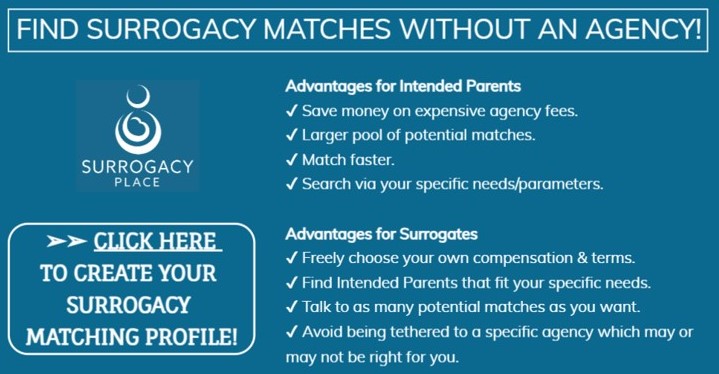How Long Does Surrogacy Take?
Surrogacy is a complex and emotionally charged process that involves multiple stages, each contributing to the overall timeline. While the duration can vary, the surrogacy journey typically takes around 12 to 18 months from the initial decision to pursue surrogacy to the birth of the child.
If you’re an Intended Parent, discussing your options with a fertility clinic is the crucial first step in determining whether surrogacy is the right path for you. Fertility clinics play a pivotal role in guiding individuals or couples through the complexities of assisted reproductive technologies and surrogacy processes. These clinics provide comprehensive assessments of fertility and potential challenges that might affect conception. Through these evaluations, individuals can gain a clearer understanding of their fertility status and whether traditional conception methods or surrogacy might be more suitable. Fertility clinics offer in-depth information about various family-building options. During consultations, prospective parents can learn about the surrogacy process, legal considerations, and the potential emotional and physical aspects involved. This informed discussion with fertility experts helps individuals or couples make well-informed decisions based on their unique circumstances, preferences, and medical conditions. By initiating the conversation with a fertility clinic, individuals embark on a journey of understanding, paving the way for informed choices and a clearer path toward building their desired family.
If you’re a potential surrogate, becoming a surrogate is a significant decision and there are various considerations that come into play before making such a commitment. One crucial aspect is the emotional and psychological readiness to embark on a surrogacy journey. Surrogates must go into a surrogacy arrangement understanding that the ultimate goal is to help another family fulfill their dreams of parenthood. Women contemplating surrogacy must evaluate the potential impact on their physical health. The surrogacy process involves fertility treatments, medical screenings, and the physical demands of pregnancy and childbirth. Prospective surrogates need to assess their own health and well-being to ensure they can navigate the medical aspects of surrogacy safely. This includes considering any potential risks, the impact on their lifestyle and daily routines, and the support systems available to them throughout the surrogacy journey. Overall, women contemplating surrogacy carefully weigh both the emotional and physical aspects, ensuring that they are fully prepared for the responsibilities and challenges that come with being a surrogate.
The first major step in the surrogacy process is matching. This can take a variable amount of time, as it depends on factors such as the availability of potential surrogates, matching preferences on both sides, and legal considerations. Some Intended Parents find a surrogate quickly, especially if going independently or partnering with an agency with shorter wait times, while others may take longer if they have unusual or very specific criteria.
The time it takes for Intended Parents to match with surrogates through a surrogacy agency can vary widely. On average, it may take a year or more (sometimes 3-5 years!) for Intended Parents to be matched with most surrogacy agencies. This is because surrogate agencies have a finite number of surrogates registered with them, so Intended Parents must wait their turn and trust the surrogate agency does a great job recruiting quality surrogates. For this reason, independent journeys often progress more quickly, sometimes as quickly as a few months, though there can also be more due diligence involved.
It’s important to note that individual circumstances and legal requirements can all impact the timeline. Intended parents need to be patient and prepared for variations in the matching process duration.
Once a surrogate and Intended Parents are matched, medical evaluations are scheduled, ensuring the surrogate is in good health. This includes overall health assessments, review of past pregnancies, ultrasound screening, and screenings for infectious diseases. The medical screening process generally takes a few weeks to complete as it involves coordinating appointments and waiting for results.
After full medical clearance, legal can be finalized. Legal contracts outlining the rights and responsibilities of all parties involved must be drafted and reviewed by attorneys. This stage can take a few weeks to a couple of months, depending on the efficiency of legal processes and any negotiations that may occur. If a surrogate has previous experience, the negotiations tend to take less time because she’s more familiar with general terms and what she wants from the experience. Contracts are never signed until after medical evaluations.
After medical clearance, the fertility treatments commence. The timeline here varies based on the specific assisted reproductive technologies used, such as in vitro fertilization (IVF). The preparation of the surrogate’s uterus, egg retrieval from the Intended Mother or an egg donor, and fertilization can take several weeks.
Once the embryo is successfully created, it is transferred to the surrogate’s uterus. The implantation process is relatively quick, occurring within a few days. However, the subsequent waiting period for pregnancy confirmation through beta hCG tests takes about two weeks.
The pregnancy itself lasts around 40 weeks if a typical full-term pregnancy. Regular prenatal check-ups, monitoring the health of both the surrogate and the developing fetus, occur throughout this period.
Legal procedures for establishing parentage typically begin in the second trimester and can extend into the post-birth period. Finalizing legal parentage involves court proceedings, which may add a few more months to the overall timeline.
The birth of the child is a significant milestone in the surrogacy process. While the actual labor and delivery may take a day or more, the post-birth legal processes, such as obtaining the birth certificate with the Intended Parents’ names, can take additional time.
The surrogacy process is a multi-faceted journey with numerous steps, each contributing to the overall duration. While the timeline can vary based on individual circumstances and legal requirements, a rough estimate suggests that the entire process takes approximately 12 to 24 months from the decision to pursue surrogacy to the birth of the child.
What factors can speed up a surrogacy journey timeline?
Several factors can potentially speed up the timeline in a surrogacy journey. While the process can vary based on individual circumstances and legal requirements, here are some factors that may contribute to a faster surrogacy timeline:
Self matching: Self matching and not being at the mercy of an agency waitlist can sometimes significantly impact the speed of the matching process.
Clear Communication: Open and clear communication between Intended Parents and surrogates can help expedite the process.
Previous Surrogacy Experience: If the surrogate has prior experience with surrogacy, she may already be familiar with the process, which can potentially shorten certain steps. Intended Parents with previous successful surrogacy journeys may also have streamlined processes.
Medical and Legal Preparedness: Being prepared with necessary medical and legal documentation can prevent delays. Ensuring that all medical and legal requirements are met before starting the matching process can contribute to a faster journey.
Flexible Preferences: Intended Parents who are open to a wider range of surrogate characteristics (such as location, age, or previous surrogacy experience) may have a larger pool of potential matches, potentially speeding up the matching process.
Timely Decision-Making: Making timely decisions throughout the process, including responding promptly to potential matches, can help keep the journey on track.
Legal Environment: The legal environment in the chosen location can impact the speed of the surrogacy journey. Some jurisdictions have more efficient and surrogacy-friendly legal systems, which can contribute to a faster process.
It’s important to note that while these factors may contribute to expediting the surrogacy journey, the overall timeline can still vary based on individual circumstances and unforeseen events. Open communication from both sides and legal professionals can help navigate the process more efficiently.
FAQ: How Long Does Surrogacy Take?
How long does the surrogacy journey typically take?
The surrogacy journey usually takes around 12 to 24 months from the initial decision to pursue surrogacy to the birth of the child. However, individual timelines may vary.
What is the first step for Intended Parents in the surrogacy process?
The crucial first step for intended parents is to discuss their options with a fertility clinic. Fertility clinics play a pivotal role in providing comprehensive assessments of fertility, potential challenges, and information about family-building options.
What considerations should potential surrogates keep in mind before committing to surrogacy?
Potential surrogates should carefully evaluate their emotional and psychological readiness, as well as assess the potential impact on their physical health. This includes considering the physical demands of pregnancy and childbirth, potential risks, and available support systems.
How long does it take for Intended Parents to match with surrogates through an agency?
On average, it may take a year or more (sometimes 2-3+ years) for Intended Parents to be matched with surrogates through most surrogacy agencies. Factors such as agency efficiency, clear communication, and flexibility in preferences can influence the matching process duration. The timeline to getting started is why some Intended Parents choose to self match via sites like SurrogacyPlace.com.
What factors can speed up a surrogacy journey timeline?
Several factors can potentially expedite the surrogacy journey, including self-matching, clear communication between parties, previous surrogacy experience, medical and legal preparedness, flexible preferences, timely decision-making, and a surrogacy-friendly legal environment.
What happens after the matching process is completed?
After the surrogate and Intended Parents are matched, medical evaluations are scheduled to ensure the surrogate’s good health. Subsequently, legal contracts outlining the rights and responsibilities are drafted and reviewed by attorneys before medical procedures commence.
What factors contribute to the overall duration of the surrogacy process?
The overall duration of the surrogacy process is influenced by factors such as individual circumstances, legal requirements, matching process efficiency, and unforeseen events. Open communication and collaboration between all parties involved can help navigate the journey more efficiently..











